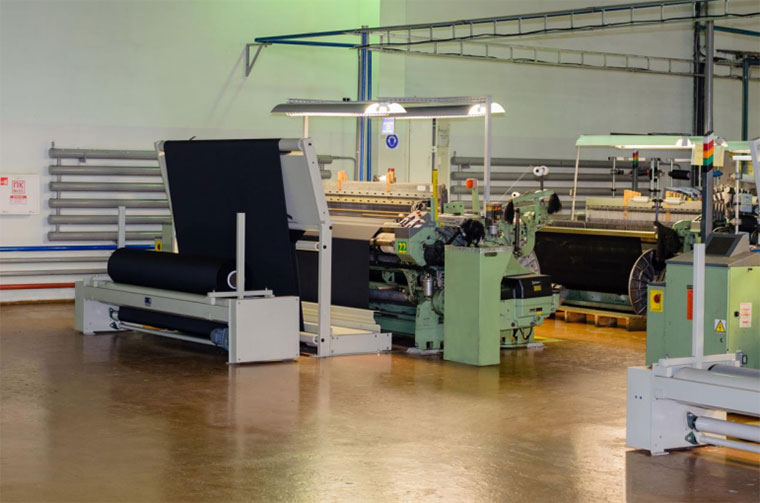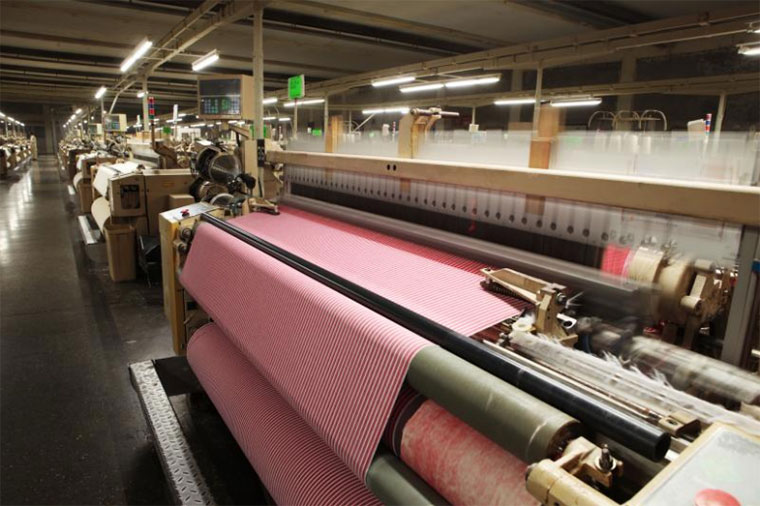The history of automation in the weaving market is replete with stories of developers whose suggestions were untimely or impractical. The determination of innovators is a testimony to the value of fabric in our culture and also of the rewarding nature of the business. Mechanization of the weaving procedure began in earnest in the 18th century. Prior to developments in automation, one weaver was required to operate one impend, as well as an aide was necessary if an intricate pattern was being woven. There were a few growths prior to 1700, but none of importance or permanent influence. One problem that innovators encountered was violent opposition from fabric workers who felt bitter any type of technologies that would speed up an individual's production capacity as well as for that reason reduce the varieties of weavers needed. Improvements in the rate of weaving throughout the 18th century were given impetus by the invention of spinning machinery for the manufacturing of yarn required for weaving. Until mechanical rotating came into usage, the output of 3 to four spinners was essential to maintain one weaver completely employed. Approval of developments in impend technology was likewise helped by proceeding renovations in rotating and also towel completing innovations. The very first substantial move toward automated weaving occurred when John Kay designed the flying shuttle in 1733. The flying shuttle bus was propelled by the weaver drawing a cord or deal with that drove the shuttle across the width of the textile. Not only did this speed weaving by as much as four times, it likewise enabled a weaver to create cloth broader than his arm's reach.
First Power Loom
In 1785, a clergyman called Edmund Cartwright patented the initial power impend. It was originally powered by an oxen, after that by the brand-new vapor engine patented by James Watt in 1769. Cartwright's loom was slow to be accepted, but by the 1830s variations of his loom made it possible for one weaver and also an aide to run four looms concurrently. This machine was limited to generating ordinary fabrics.

Automated Textile Production
The automation of patterned fabric production began with the 1804 creation by Joseph Marie Jacquard. His supposed Jacquard device could be mounted on any type of loom and regulated the training of the warp threads that develop the fabric's pattern. Previously, complex patterns needed to be set up ahead of time on a loom as well as called for an aide to operate, but the Jacquard accessory allowed one weaver to regulate the shuttle bus and the pattern device alone. Punched cards regulated the lift of the warp pattern threads as well as a style could be altered very promptly by transforming the strike cards that represent a certain style. This standard system continues to be in use in the early twenty-first century.
Automatic Shuttle Change Machine
Power loom 1882
In 1835 the very first automatic shuttle bus adjustment machine made it possible for weft yarns of various colors to be inserted immediately in the weaving. 1895 saw the invention of the automatic pirn (weft supply) change in the shuttle, presented by J. H. Northrop. Not up until the 1950s did automatic weft winding straight on the weaving device come to be readily sensible. It was presented by the Leesona Company and referred to as the "Unifil" system.
Shuttleless Looms
Shuttleless looms showed up in the mid-twentieth century as well as utilized various systems: grippers, rapier, as well as jets of water or air. Gripper makers utilize a tiny projectile that picks up a weft from a supply on the side and also lugs it to the opposite; rapier devices make use of a long thin rod which travels from one side and also gets a weft which it draws throughout as it returns (there are single and also double rapier impends; the double rapiers meet in the center as well as work off the weft thread); jet looms utilize a jet of air or water to propel the weft from side to side. Jet looms have the advantage of being specifically quick and also can weave widths approximately 85 inches. The rapier impend has the oldest history as the idea shows up in a patent of 1678; the modern rapier loom was released in 1963 by Dornier of Germany. A leader of the modern air jet impend first appeared in England in the 1860s, however the idea was lastly readily successful in the 1950s, introduced by Max Paabo of Sweden. The projectile (gripper) impend was designed in Switzerland by the Sulzer Brothers in 1924 however did not enter business use till 1953.
Fabrics from shuttleless looms do not have a selvage, as the weft is not a continual thread. The edges can be secured with heat or resin. Till recently, these equipments were restricted to high quantity weaving. Shuttle bus looms are still utilized for weaving standard constructions in low-wage economic climates as well as for expert materials, which still consist of a large part of the marketplace.

Multiphase Loom
In the 1970s, the multiphase loom, in which all the actions of the loom take place at the same time, was presented. There are two sorts of multiphase looms: wave shed looms, in which the shed changes across the size of the textile as the weft travels, and also identical dropping, in which numerous sheds are created along the size of the warp. One of the most up to date multiphase looms can generate 1.5 yards of fabric in one minute. In the early 1980s, computer-aided design as well as manufacture (CAD/CAM) became available as well as the style procedure, which might take weeks or months could be shortened drastically to as little as a twenty-four-hour period, if needed. Computer produced design examples can likewise change actual woven samples and can for that reason be generated almost right away and also transmitted online to any type of factor on the world. This modern technology has actually additionally made it possible for developers to come to be partners in the manufacturing process, as modifications can be presented "essentially" without the cost of loom set-up and manufacturing time. Computer systems can also keep an eye on the weaving procedure itself and can spot and also instantly correct numerous blunders.




